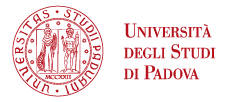Alps could face a doubling in torrential summer rainfall frequency as temperatures rise by 2°C

Short-duration extreme precipitation events, which are very intense and develop enormous amounts of rainfall within a few minutes or hours, can cause severe property damage and endanger human lives. In September 2022, an extreme weather event hit the Marche region: more than 100 mm of rain in one hour generated floods and landslides that caused 13 deaths and 2 billion euros in damages.
With global warming, these events risk becoming increasingly frequent, especially in the Alpine region where temperatures are rising more rapidly than the global average. Warm air retains more moisture (about 7% more per degree), and additionally, thunderstorm activity intensifies as temperature increases. Quantifying the potential impact of climate change on these events is crucial.
In the study titled "A 2°C warming can double the frequency of extreme summer downpours in the Alps", published in "npj Climate and Atmospheric Science" (Nature portfolio)", the research team from the University of Padua and the University of Lausanne has demonstrated that an average temperature increase of 2°C could double the frequency of short-duration summer thunderstorms in the Alpine region: what today happens every half-century could occur every 25 years in the future.
To obtain these results, the researchers examined data from almost 300 weather stations in the European Alps, spread across Switzerland, Germany, Austria, France, and Italy. They focused on record-breaking rainfall events (lasting from 10 minutes to an hour) between 1991 and 2020, as well as temperatures associated with these storms.
Based on these observations, a statistical model was developed that incorporates physical principles to establish a link between temperature and rainfall frequency, and then to simulate the future frequency of extreme precipitation using regional climate projections. According to the research findings, problems for mountain areas could intensify even with an average increase of 1°C in local temperatures.
"A 1°C increase is not hypothetical; it's likely to occur in the coming decades," says Francesco Marra, researcher at the Department of Geosciences at the University of Padua and one of the main authors of the study. "We are already witnessing a trend towards intensification of summer thunderstorms, and this trend is expected to worsen further in the years to come.”
"The sudden and massive arrival of large volumes of water prevents the soil from absorbing the excess," emphasizes Nadav Peleg, researcher at the University of Lausanne and first author of the study. "This can trigger flash floods and debris flows, causing damage to infrastructure and, in some cases, casualties.”
The authors conclude by reminding how crucial it is to understand how these events may evolve with climate change in order to plan appropriate adaptation strategies, including in terms of infrastructure adjustment. The analysis of the expected intensification for 10-minute extreme precipitation from 1 to 3 degrees of regional warming confirms a general intensification in the Alpine area, with greater strengthening at higher altitudes. With a 2°C increase in the regional average temperature, extreme precipitation statistics in the Alps will likely undergo significant changes, resulting in a doubling of the probability of occurrence of extreme rainfall levels. Only
Link to the paper: https://www.nature.com/articles/s41612-025-01081-1
Title: A 2°C warming can double the frequency of extreme summer downpours in the Alps - «npj Climate and Atmospheric Science» - 2025
Authors: Nadav Peleg, Marika Koukoula and Francesco Marra





